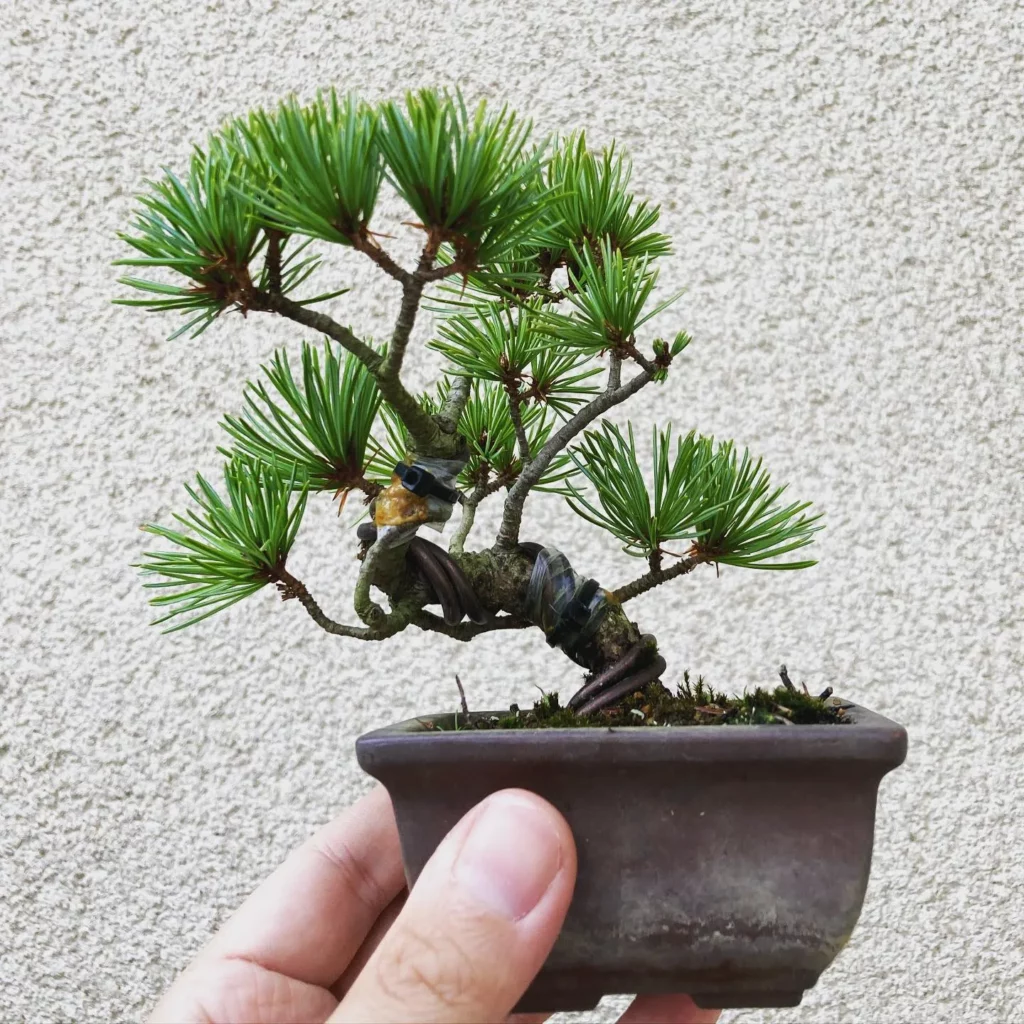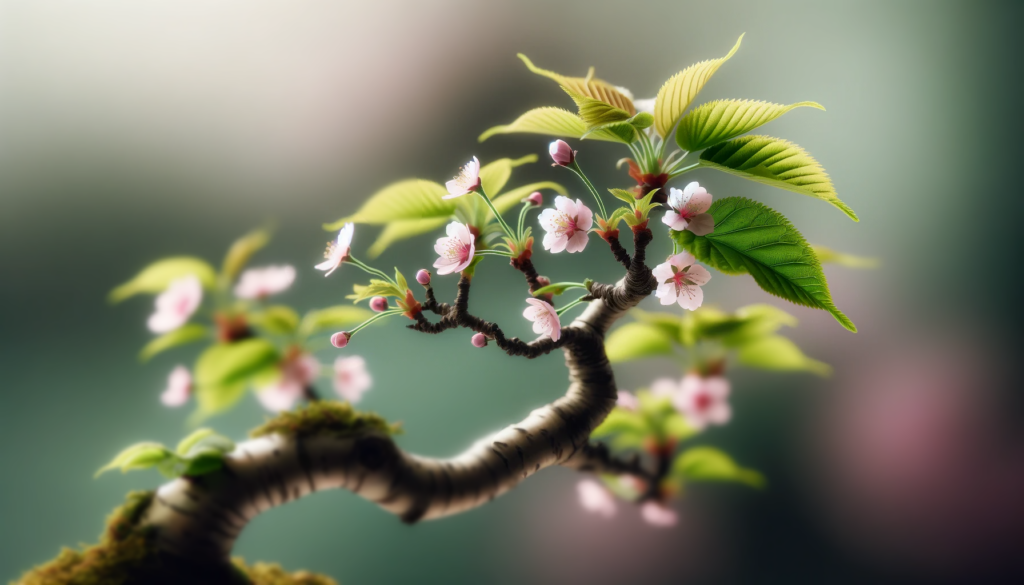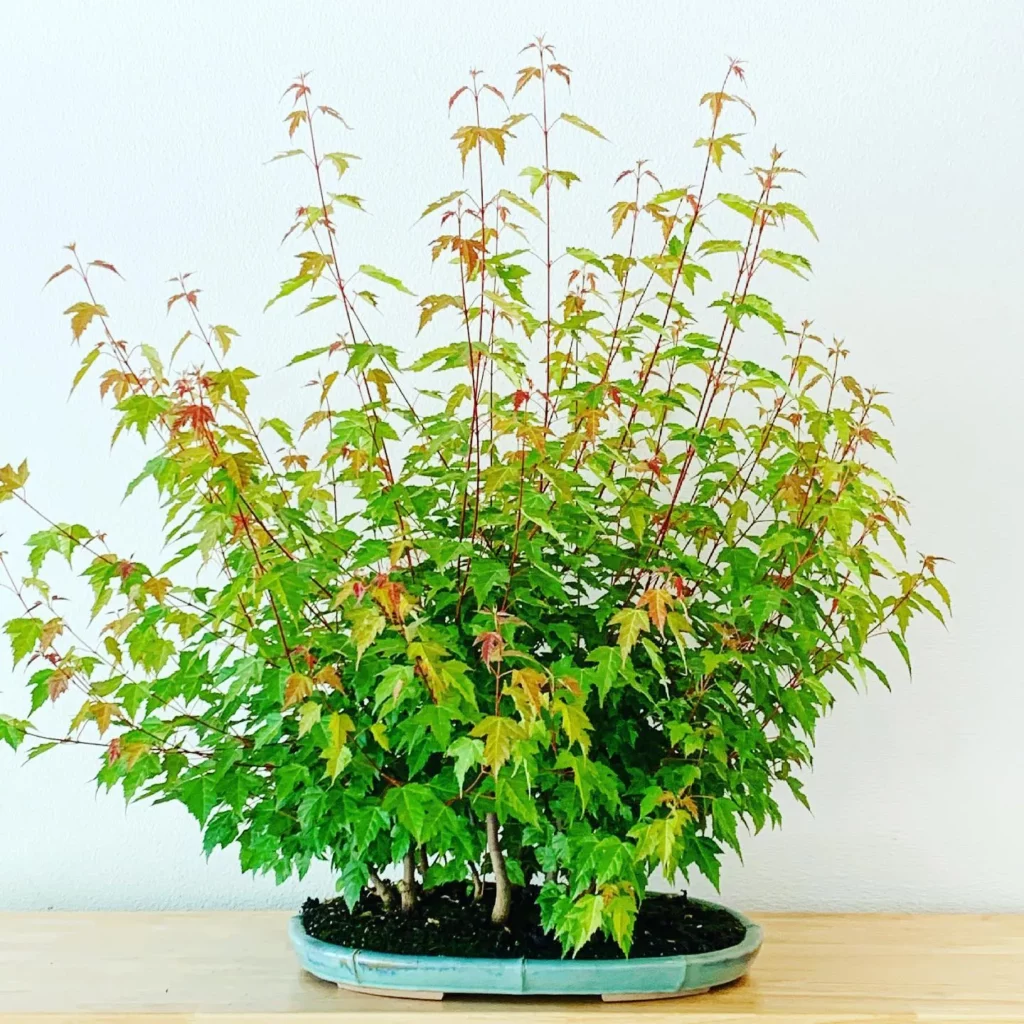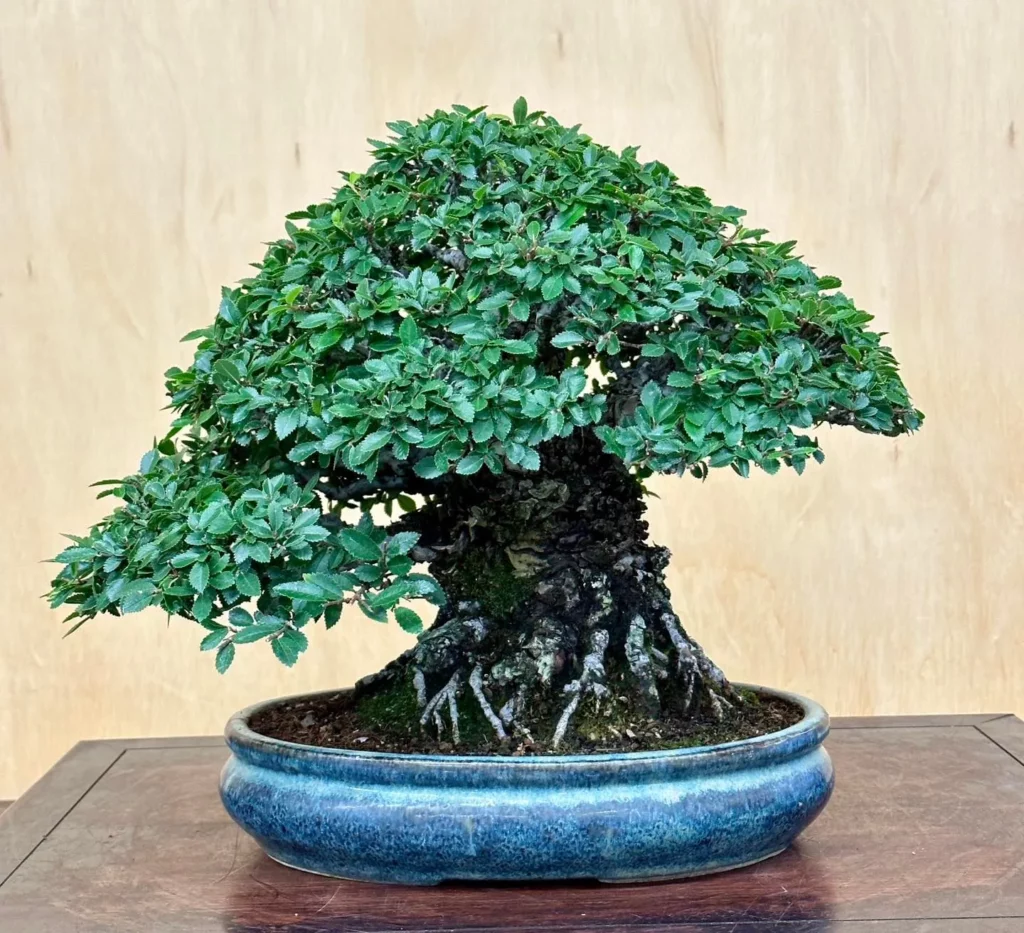Welcome to the enchanting world of bonsai! If you are fascinated by the idea of cultivating miniature trees and turning them into breathtaking masterpieces, you have come to the right place. In this article, we will guide you through the art of growing bonsai trees, step by step. From choosing the right tree to understanding basic techniques, selecting the perfect pot and soil mix, pruning and shaping, watering and care, repotting, and practicing patience and observation – we’ve got you covered.
Growing bonsai trees is a true labor of love. By dedicating time and attention to each step, you will witness these remarkable trees transform into exquisite miniature versions of their larger counterparts. Captivating eyes with their intricate beauty, bonsai trees are a testament to the harmonious relationship between nature and artistry.
Choosing the Right Tree for Your Bonsai

When it comes to cultivating bonsai trees, choosing the right tree is a crucial first step. Considering factors such as climate, available space, and the tree’s resilience to shaping can greatly impact the success of your bonsai journey.
For beginners, it is recommended to start with beginner-friendly bonsai tree species that are forgiving and easier to care for. Three common choices for beginners include:
No products found.
- Ficus: Ficus trees are known for their adaptability and ability to thrive indoors. They can tolerate a wide range of conditions, making them suitable for beginners.
- Juniper: Juniper trees are hardy and resilient, making them ideal for beginners. They are known for their beautiful foliage and characteristic gnarled trunks.
- Maple: Maple trees are known for their vibrant foliage and stunning aesthetic appeal. While they require more specific care and attention, they can reward bonsai enthusiasts with their beauty.
Each tree species has its own unique requirements for cultivation and care. It is important to research and understand the specific needs of the tree species you choose, including optimal light conditions, watering frequency, and pruning techniques.
Understanding Basic Techniques in Bonsai Cultivation
Before you can dive into the practical aspects of bonsai cultivation, it’s crucial to understand the fundamental techniques that form the foundation of this art form. These techniques include pruning, wiring, repotting, and styling, which are essential for maintaining the health and aesthetic appeal of your bonsai tree.

Pruning: Shaping your Bonsai’s Miniature Proportions
Pruning is a key technique in bonsai cultivation that helps maintain the miniature proportions of your tree. By selectively trimming branches and leaves, you can create a beautifully balanced tree that mimics the grandeur of its full-sized counterparts. Pruning not only shapes your bonsai but also encourages new growth and maintains the overall health of the tree.
Wiring: Guiding Branches for Aesthetic Appeal
Wiring is another important technique used in bonsai cultivation. By carefully wrapping wires around the tree’s branches, you can guide their growth and achieve the desired aesthetic shape. This technique allows you to create elegant curves, graceful bends, and intricate branch structures, transforming your bonsai into a true work of art.
Repotting: Encouraging Healthy Root Growth
Repotting is a necessary step in bonsai care that should be done every few years. During repotting, the tree is carefully removed from its pot, and the roots are trimmed. This process encourages healthy root growth, prevents root-bound trees, and allows you to provide fresh soil and nutrients for your bonsai. Proper repotting ensures the long-term health and vitality of your miniature tree.
Styling: Shaping your Bonsai into a Work of Art
Styling is the final touch in bonsai cultivation that involves shaping your tree into a desired form. Whether you prefer the formal upright style, the informal upright style, or the cascading style, styling techniques such as branch selection, branch placement, and foliage arrangement help you create a visually appealing masterpiece that reflects your artistic vision.
Pot and Soil Selection for Bonsai Trees
Choosing the right pot and soil mix is essential for the health and vitality of your bonsai tree. The pot you select should not only complement the size and style of your tree but also provide adequate drainage. Good drainage is crucial as it allows excess water to escape and prevents root rot.

Choosing the Right Bonsai Pot
When selecting a bonsai pot, consider the size and shape of your tree. A shallow pot is generally preferred for bonsai trees, as it helps create the illusion of a mature tree in miniature. Additionally, ensure that the pot has drainage holes to facilitate proper water drainage. Examples of popular bonsai pot materials include clay, ceramic, and plastic.
Understanding Bonsai Soil Requirements
Bonsai trees require a well-draining soil mix that promotes healthy root growth. A suitable soil mix should have good drainage to prevent waterlogged roots while retaining enough moisture to support the tree’s needs. Pre-packaged bonsai soil mixes or a mixture of Akadama, pumice, and lava rock are commonly used in bonsai cultivation.
Adequate Drainage for Bonsai Trees
Ensuring adequate drainage is vital to maintain the health of your bonsai tree. To achieve this, place a layer of small stones or mesh over the drainage holes at the bottom of the pot. This will prevent the soil from clogging the drainage holes and promote efficient water flow.
No products found.
Taking the time to select the right pot and soil mix, and ensuring adequate drainage, will provide a solid foundation for your bonsai tree’s growth and overall well-being.
Pruning and Shaping Techniques in Bonsai Care
Pruning and shaping are fundamental techniques in the care and maintenance of bonsai trees. These techniques play a crucial role in maintaining the miniature proportions and desired aesthetic of your bonsai.

Pruning for Maintaining Miniature Proportions
Pruning involves carefully trimming the branches and leaves of your bonsai tree. By selectively removing excess foliage, you can ensure that your bonsai maintains its miniature size and delicate appearance. Regular pruning also stimulates new growth, helping your tree to develop fullness and balance in its branching structure.
Shaping with the Help of Wiring
Shaping a bonsai involves guiding the growth of the branches to achieve the desired aesthetic form. This is often achieved through the use of wires. By gently wrapping and positioning wires around the branches, you can guide their growth in a controlled manner. This allows you to create unique and visually appealing shapes, such as graceful curves or windswept styles.
- When wiring your bonsai tree, be mindful of the tension applied to avoid damaging the branches.
- Make sure to use aluminum or copper wires that are specifically designed for bonsai. These wires are flexible, allowing for easy shaping, and do not harm the tree.
- Regularly check the wires to ensure they do not cut into the branches as the tree grows. If necessary, adjust the wiring or remove it once the desired shape has been achieved.
No products found.
Watering and Care for Bonsai Trees
Proper watering and care are crucial for the health and vitality of your bonsai tree. To ensure your bonsai thrives, it’s important to strike a balance between overwatering and underwatering.
Striking a Balance
- Overwatering can lead to root rot and other moisture-related issues. It’s important not to let your bonsai sit in excess water.
- Underwatering can cause stress to the tree and result in wilting and leaf drop. It’s essential to provide enough water to meet the tree’s needs.
Adjusting watering frequency is essential for the well-being of your bonsai tree. The frequency depends on various factors, including tree species, pot size, and climate.
Adjusting Watering Frequency
- Begin by observing the moisture level of the soil. Stick your finger about an inch deep into the soil to gauge its dryness.
- If the soil feels dry, it’s time to water your bonsai. Use a watering can with a fine nozzle to ensure gentle watering.
- If the soil still feels moist, refrain from watering to avoid over saturation. Bonsai trees prefer a slightly moist but not waterlogged environment.
Repotting Bonsai Trees for Healthy Root Growth
As your bonsai tree continues to grow, its roots become compacted within the pot. To ensure the health and vitality of your bonsai, repotting is a necessary step that should be undertaken every few years.
Repotting involves carefully removing the tree from its current pot and examining the roots. Over time, the roots can become tangled and compacted, hindering their ability to absorb nutrients and water effectively. By gently trimming these compacted roots, you encourage new, healthy root growth.
After root pruning, it is essential to place your bonsai in fresh soil. Choosing a well-draining soil mix is crucial, as it allows excess water to escape, preventing root rot. The soil mix should also retain enough moisture to support root growth and provide vital nutrients.
The process of repotting not only allows for healthy root growth but also gives you the opportunity to evaluate the overall health of your bonsai tree. It allows you to examine the root system, check for any signs of disease or pests, and adjust the tree’s positioning within the pot if necessary.
Practicing Patience and Observation in Bonsai Care
Growing a bonsai tree requires patience and a keen sense of observation. As you embark on this journey, it is important to pay close attention to your tree’s response to various care routines, such as pruning and wiring, as well as changes in its environment.
Observing your bonsai tree’s response to pruning techniques is crucial in maintaining its miniature proportions and overall health. Regular pruning helps stimulate new growth and shape the tree according to your desired aesthetic. By observing the tree’s response to each pruning session, you can adapt your pruning techniques to meet its specific needs.
Similarly, wiring is a technique used in bonsai cultivation to guide the growth of branches and achieve the desired artistic form. As you apply wire to your tree, observe how it responds to the shaping process. If you notice any signs of discomfort or strain, you can adjust the wiring technique accordingly to ensure the tree’s well-being.
Alongside pruning and wiring, paying attention to your bonsai tree’s environment is essential. Changes in temperature, humidity, and lighting conditions can impact its growth and health. By observing how your tree reacts to these changes, you can adapt your care routine to provide the optimal conditions for its well-being.
Adapting Care Based on Observation
- When observing your bonsai tree, look for signs of stress or deficiency, such as yellowing leaves or drooping branches. These may indicate that adjustments need to be made in your watering, lighting, or fertilizing routines.
- Regularly check the soil’s moisture level by gently inserting your finger into the soil. If it feels dry, it’s time to water your tree. If it feels overly wet, you may need to adjust your watering frequency to prevent waterlogged roots.
- Take note of how your tree responds to different fertilizers. Observe whether it shows signs of improved vigor and growth or if it exhibits any negative reactions. Adjust the type and frequency of fertilization accordingly.
- Consider the overall health and appearance of your bonsai tree. If you notice any signs of disease or pests, take immediate action to address the issue and prevent further damage to the tree.
The Rewards of Growing Bonsai Trees
Cultivating bonsai trees is a rewarding journey that allows you to nurture living works of art and transform ordinary trees into miniature giants. The artistry and patience involved in bonsai cultivation create a unique connection between humans and nature, resulting in breathtaking living sculptures.
Through the process of bonsai cultivation, you can experience the joy of witnessing a tiny sapling gradually evolve into a beautifully crafted miniature tree that mirrors the grandeur and elegance of its full-sized counterparts. The sense of accomplishment and pride that comes from guiding the growth and development of your bonsai tree is truly unparalleled.
As you invest time and effort into the care of your bonsai trees, you will develop a deep appreciation for the delicate balance between nature and art. Tending to the tree’s needs, observing its response to your care, and adapting your techniques accordingly will strengthen your bond with these living sculptures and bring a sense of fulfillment like no other.
After this check out our other articles on:
FAQ
What is bonsai cultivation?
Bonsai cultivation is the art of growing and shaping miniature trees, creating living works of art.
How do I choose the right tree for bonsai cultivation?
When selecting a tree for bonsai cultivation, consider factors such as climate, available space, and the tree’s resilience to shaping. Common choices for beginners include ficus, juniper, and maple.
What are the basic techniques in bonsai cultivation?
The basic techniques in bonsai cultivation include pruning, wiring, repotting, and styling. Pruning maintains the bonsai’s miniature proportions, wiring guides branch growth, repotting encourages healthy root growth, and styling shapes the tree into a desired form.
How do I select the right pot and soil for my bonsai tree?
Choose a pot that complements the tree’s size and style while allowing for adequate drainage. The soil mix should be well-draining yet retain enough moisture to support root growth.
What is the purpose of pruning and shaping in bonsai care?
Pruning and shaping are crucial for maintaining the bonsai’s miniature proportions and achieving the desired aesthetic. They involve trimming branches and using wires to guide growth.
How should I water and care for my bonsai tree?
Proper watering is key to the health of a bonsai tree. Balance between overwatering and underwatering is essential. The frequency of watering varies based on factors like tree species, pot size, and climate. Regularly check the soil moisture level and adjust watering accordingly.
How often should I repot my bonsai tree?
Bonsai trees should be repotted every few years as their roots become compacted. Repotting involves carefully removing the tree from its pot, trimming the roots, and placing it in fresh soil.
What should I consider when practicing bonsai cultivation?
Practicing patience and observation are vital in bonsai care. Pay attention to the tree’s response to pruning, wiring, and environmental changes. Understand its needs and adapt care accordingly.
What are the rewards of growing bonsai trees?
Growing bonsai trees is a rewarding endeavor that allows you to nurture your own miniature giants and create living works of art.




